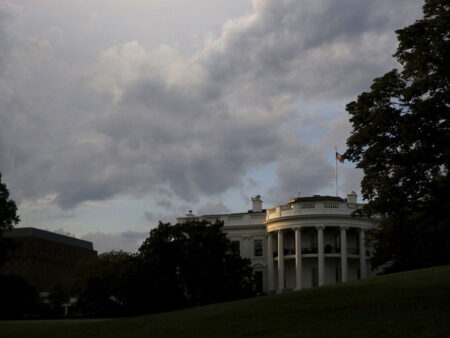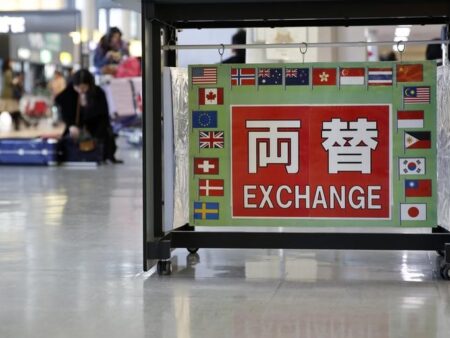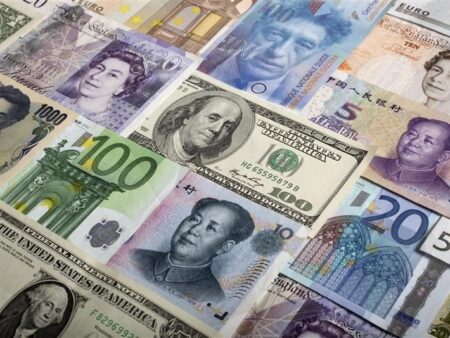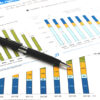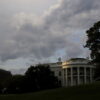Investing.com – The US dollar drifted lower Wednesday amid uncertainty over President Donald Trump’s plans for tariffs, while sterling fell on disappointing government borrowing data.
At 04:45 ET (09:45 GMT), the Dollar Index, which tracks the greenback against a basket of six other currencies, traded 0.1% lower to 107.755, after a slide of over 1% at the start of the week.
Dollar slips on tariffs uncertainty
The dollar remained on the backfoot as traders tried to gauge the full extent of President Donald Trump’s plans for tariffs, and the potential pain the new administration plans to inflict on major trade partners.
Trump said late on Tuesday that his administration was discussing imposing a 10% tariff on goods imported from China on Feb. 1, the same day as he said Mexico and Canada would face levies of around 25%.
He also indicated that Europe would also suffer from the imposition of duties on European imports, but has refrained from enacting these tariffs despite signing a deluge of executive orders following his inauguration on Monday.
“Data will play a secondary role this week as all the attention will be on Trump’s first executive orders,” said analysts at ING, in a note. “Incidentally, the Federal Reserve is in the quiet period ahead of next Wednesday’s meeting. Expect a lot of ‘headline trading’ and short-term noise, with risks still skewed for a stronger dollar.”
Sterling falls after retail sales dip
In Europe, traded 0.1% lower to 1.2349, after data showed that Britain ran a bigger-than-expected budget deficit in December, lifted in part by rising debt interest costs.
was £17.8 billion pounds in December, more than £10 billion pounds higher than a year earlier, the Office for National Statistics said on Wednesday.
Rising UK government bond yields have added to the cost of servicing the country’s debt, and could result in the new Labour government having to cut government spending to meet its fiscal rules.
edged higher to 1.0429, but the single currency remains generally weak with the European Central Bank widely expected to cut interest rates more consistently this year than its main rivals, the Federal Reserve and the Bank of England.
The is seen cutting interest rates four times in the next six months, with a reduction next week largely expected to be a done deal.
“The direction is very clear,” ECB President Christine Lagarde told CNBC in Davos about interest rates. “The pace we shall see depends on data, but a gradual move is certainly something that comes to mind at the moment.”
BOJ meeting looms large
In Asia, dropped 0.1% to 155.69, ahead of the Bank of Japan’s two-day policy meeting later this week.
The is widely expected to raise interest rates on Friday, and could reiterate its commitment to further rate hikes if the economy maintains its recovery.
traded largely unchanged at 7.2715, with the Chinese currency still weak after Trump said he is considering imposing 10% tariffs on Chinese imports from Feb. 1.






